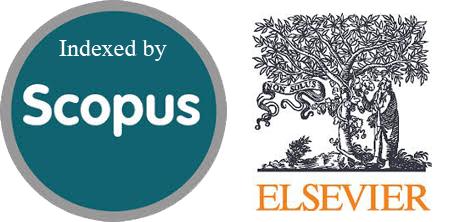SHIP2 Silencing Enhances Erastin Cytotoxicity in MDA-MB-231 Breast Cancer Cell Line
DOI:
https://doi.org/10.54133/ajms.v8i2.1916Keywords:
Erastin, MDA-MB-231, SHIP2-siRNA, Triple-negative breast cancerAbstract
Background: Breast cancer (BC) is a serious health risk to women worldwide. Triple-negative breast cancer (TNBC) is a highly heterogeneous type of breast cancer that is highly malignant, recurrent, and invasive. Despite cancer treatment having developed rapidly in the past decades, TNBC is still having challenges. Erastin is an inducer of ferroptosis and inhibits tumor cell growth, thus making it a promising strategy for cancer therapy. The SH2-containing 5´ inositol phosphatase 2 (SHIP2) is overexpressed in BC, where it is associated with poor prognosis. Objective: To address the effect of erastin, SHIP2 silencing, and the combination of both on the viability of MDA-MB-231 BC cells and the impact on the protein kinase B (Akt)/mechanistic target of rapamycin (mTOR) pathway. Methods: MDA-MB-231 BC cells were cultured in Dulbecco’s modified Eagle’s medium (DMEM) and treated with erastin, SHIP2-siRNA, and their combination. Cell viability was assessed by 4,5-dimethylthiazol-2-yl-2,5-diphenyltetrazolium bromide (MTT) assay. Western blot was used to estimate the levels of phospho-Akt and p70 ribosomal protein S6 kinase (p70S6k). Results: The results showed that each of erastin, SHIP2-siRNA, and their combination resulted in growth inhibition of MDA-MB-231 cells and suppressed phospho-Akt but not p70S6K. Conclusions: SHIP2 silencing enhanced the cytotoxicity of erastin in MDA-MB-231 BC cells. Akt, but not mTOR, was involved in the signaling pathway of erastin and SHIP2-siRNA. The combination of both treatments has shown enhanced suppression of phospho-Akt. The results indicate that the combination of erastin and SHIP2-siRNA gives a promising strategy for the treatment of TNBC.
Downloads
References
Ge A, He Q, Zhao D, Li Y, Chen J, Deng Y, et al. Mechanism of ferroptosis in breast cancer and research progress of natural compounds regulating ferroptosis. J Cell Mol Med. 2024;28(1):e18044. doi: 10.1111/jcmm.18044. DOI: https://doi.org/10.1111/jcmm.18044
Bedewi BK, Jasim GA, Abbas IS, Al-Sudani BT. Cytotoxicity of cryptochlorogenic acid against breast cancer cell line (MCF7) isolated from Moringa oleifera leaves cultivated in Iraq. Al-Mustansiriyah J Pharm Sci. 2022;22(2):35-43. doi: 10.32947/ajps.v22i2.837. DOI: https://doi.org/10.32947/ajps.v22i2.837
Salih AI, Al-Sudani BT, Mshimesh BA. Targeting POLD1 to suppress the proliferation and migration of breast cancer MDA-MB-231 cell lines by downregulation of SIRT1. Toxicol Res (Camb). 2024;13(4):tfae111. doi: 10.1093/toxres/tfae111. DOI: https://doi.org/10.1093/toxres/tfae111
Li J, He D, Li S, Xiao J, Zhu Z. Ferroptosis: the emerging player in remodeling triple-negative breast cancer. Front Immunol. 2023;14:1284057. doi: 10.3389/fimmu.2023.1284057. DOI: https://doi.org/10.3389/fimmu.2023.1284057
Vagia E, Mahalingam D, Cristofanilli MJC. The landscape of targeted therapies in TNBC. Cancer Res. 2020;12(4):916. doi: 10.3390/cancers12040916. DOI: https://doi.org/10.3390/cancers12040916
Al-Mashhadani Z, Naser R, Zalzala MH. The impact of new targeting methods in the cancer therapy. Int J Appl Pharm. 2019;11(2):1-6. doi: 10.22159/ijap.2019v11i2.30979. DOI: https://doi.org/10.22159/ijap.2019v11i2.30979
Zhang J, Zhou K, Lin J, Yao X, Ju D, Zeng X, et al. Ferroptosis-enhanced chemotherapy for triple-negative breast cancer with magnetic composite nanoparticles. J Biomater. 2023;303:122395. doi: 10.1016/j.biomaterials.2023.122395. DOI: https://doi.org/10.1016/j.biomaterials.2023.122395
Diao J, Jia Y, Dai E, Liu J, Kang R, Tang D, et al. Ferroptotic therapy in cancer: benefits, side effects, and risks. Mol Cancer. 2024;23(1):89. doi: 10.1186/s12943-024-01999-9. DOI: https://doi.org/10.1186/s12943-024-01999-9
Jiang X, Stockwell BR, Conrad M. Ferroptosis: mechanisms, biology and role in disease. Nat Rev Mol Cell Biol. 2021;22(4):266-82. 9. doi: 10.1038/s41580-020-00324-8. DOI: https://doi.org/10.1038/s41580-020-00324-8
Zhao Y, Li Y, Zhang R, Wang F, Wang T, Jiao Y, et al. The role of erastin in ferroptosis and its prospects in cancer therapy. Onco Targets Ther. 2020:5429-5441. doi: 10.2147/OTT.S254995. DOI: https://doi.org/10.2147/OTT.S254995
Xu C, Chen Y, Yu Q, Song J, Jin Y, Gao X. Compounds targeting ferroptosis in breast cancer: progress and their therapeutic potential. Front Pharmacol. 2023;14:1243286. doi: 10.3389/fphar.2023.1243286. DOI: https://doi.org/10.3389/fphar.2023.1243286
Wang H, Hou MJ, Liao L, Li P, Chen T, Wang P, et al. Strong protection by 4-hydroxyestrone against erastin-induced ferroptotic cell death in estrogen receptor-negative human breast cancer cells: evidence for protein disulfide isomerase as a mechanistic target for protection. Biochemistry. 2024;63(8):984-999. doi: 10.1021/acs.biochem.3c00261. DOI: https://doi.org/10.1021/acs.biochem.3c00261
Zhang HP, Jiang RY, Zhu JY, Sun KN, Huang Y, Zhou HH, et al. PI3K/AKT/mTOR signaling pathway: an important driver and therapeutic target in triple-negative breast cancer. Breast Cancer. 2024;31(4):539-551. doi: 10.1007/s12282-024-01567-5. DOI: https://doi.org/10.1007/s12282-024-01567-5
Artemenko M, Zhong SS, To SK, Wong AS. p70 S6 kinase as a therapeutic target in cancers: More than just an mTOR effector. Cancer Lett. 2022;535:215593. doi: 10.1016/j.canlet.2022.215593. DOI: https://doi.org/10.1016/j.canlet.2022.215593
Leal P, Garcia P, Sandoval A, Buchegger K, Weber H, Tapia O, et al. AKT/mTOR substrate P70S6K is frequently phosphorylated in gallbladder cancer tissue and cell lines. Onco Target Ther. 2013:1373-1384. doi: 10.2147/OTT.S46897. DOI: https://doi.org/10.2147/OTT.S46897
Villa-González M, Martín-López G, Pérez-Álvarez M. Dysregulation of mTOR signaling after brain ischemia. Int J Mol Sci. 2022;23(5):2814. doi: 10.3390/ijms23052814. DOI: https://doi.org/10.3390/ijms23052814
Pedicone C, Meyer ST, Chisholm JD, Kerr WG. Targeting SHIP1 and SHIP2 in cancer. Cancers (Bazel). 2021;13(4):890. doi: 10.3390/cancers13040890. DOI: https://doi.org/10.3390/cancers13040890
Ghosh S, Scozzaro S, Ramos AR, Delcambre S, Chevalier C, Krejci P, et al. Inhibition of SHIP2 activity inhibits cell migration and could prevent metastasis in breast cancer cells. J Cell Sci. 2018;131(16).jcs216408. doi: 10.1242/jcs.216408. DOI: https://doi.org/10.1242/jcs.216408
Müller SM, Jücker MJ. The functional roles of the Src homology 2 domain-containing inositol 5-phosphatases SHIP1 and SHIP2 in the pathogenesis of human diseases. Int J Med Sci. 2024;25(10):5254. doi: 10.3390/ijms25105254. DOI: https://doi.org/10.3390/ijms25105254
Salih AI, Mshimesh BA-R, Al-Sudani BT. Investigating the effect of EX-527 as SIRT1 inhibitor in breast cancer cell line. Al-Rafidain J Med Sci. 2024;7(1 Special):S64-69. doi: 10.54133/ajms.v7i(1S).926. DOI: https://doi.org/10.54133/ajms.v7i1(Special).926
Jia Y, Zhuang X, Zhang Y, Zhao M, Chen N, Li W, et al. The brain targeted delivery of programmed cell death 4 specific siRNA protects mice from CRS-induced depressive behavior. Cell Death Dis. 2021;12(11):1077. doi: 10.1038/s41419-021-04361-9. DOI: https://doi.org/10.1038/s41419-021-04361-9
AL-Asady SH, Al-Sudani BT, Mshimesh BA. Knockdown of α-enolase (ENO1) to suppress glycolytic pathway in human hepatocellular carcinoma cell line (HepG2). Iraqi J Pharm Sci. 2024;33(2):156-160. doi: 10.31351/vol33iss2pp156-160. DOI: https://doi.org/10.31351/vol33iss2pp156-160
Livak KJ, Schmittgen TD. Analysis of relative gene expression data using real-time quantitative PCR and the 2− ΔΔCT method. Methods. 2001;25(4):402-408. doi: 10.1006/meth.2001.1262. DOI: https://doi.org/10.1006/meth.2001.1262
Al-khfajy WS, Arif IS, Al-sudani BT. Synergistic effect of obeticholic acid and fasting-mimicking on proliferative, migration, and survival signaling in prostate cancer. Pharmacia. 2022;69:579-587. doi: 10.3897/pharmacia.69.e81452. DOI: https://doi.org/10.3897/pharmacia.69.e81452
Radhi AA, Ali WK, Al-Saedi F. Tamoxifen Citrate-loaded synthetic high-density lipoproteins: Assessment of cellular toxicity in breast cancer cells. Al-Mustansiriyah J Pharm Sci. 2023;23(1):58-67. doi: 10.32947/ajps.v23i1.987. DOI: https://doi.org/10.32947/ajps.v23i1.987
Talib LJ, Al-Sudani BT, Al-Abbassi MG. Aptamer validation by western blot–an overview. Al-Mustansiriyah J Pharm Sci. 2020;20(4):122-131. doi: 10.32947/ajps.v20i4.782. DOI: https://doi.org/10.32947/ajps.v20i4.782
Zhang C, Liu X, Jin S, Chen Y, Guo R. Ferroptosis in cancer therapy: a novel approach to reversing drug resistance. Mol Cancer. 2022;21(1):47. doi: 10.1186/s12943-022-01530-y. DOI: https://doi.org/10.1186/s12943-022-01530-y
Liu Y, Hu Y, Jiang Y, Bu J, Gu X. Targeting ferroptosis, the achilles’ heel of breast cancer: a review. Front Pharmacol. 2022;13:1036140. doi: 10.3389/fphar.2022.1036140. DOI: https://doi.org/10.3389/fphar.2022.1036140
Zhou Q, Meng Y, Li D, Yao L, Le J, Liu Y, et al. Ferroptosis in cancer: from molecular mechanisms to therapeutic strategies. Signal Transduct Target Ther. 2024;9(1):55. doi: 10.1038/s41392-024-01769-5. DOI: https://doi.org/10.1038/s41392-024-01769-5
Li M, Wang X, Lu S, He C, Wang C, Wang L, et al. Erastin triggers autophagic death of breast cancer cells by increasing intracellular iron levels. Oncol Lett. 2020;20(4):57. doi: 10.3892/ol.2020.11918. DOI: https://doi.org/10.3892/ol.2020.11918
Hoekstra E, Das AM, Willemsen M, Swets M, Kuppen PJ, van der Woude CJ, et al. Lipid phosphatase SHIP2 functions as oncogene in colorectal cancer by regulating PKB activation. Oncotarget. 2016;7(45):73525. doi: 10.18632/oncotarget.12321. DOI: https://doi.org/10.18632/oncotarget.12321
Pesesse X, Deleu S, De Smedt F, Drayer L, Erneux CJB, communications br. Identification of a second SH2-domain-containing protein closely related to the phosphatidylinositol polyphosphate 5-phosphatase SHIP. Biochem Biophys Res Commun. 1997;239(3):697-700. doi: 10.1006/bbrc.1997.7538. DOI: https://doi.org/10.1006/bbrc.1997.7538
Uçar EÖ, Şengelen A. Resveratrol and siRNA in combination reduces Hsp27 expression and induces caspase-3 activity in human glioblastoma cells. Cell Stress Chaperones. 2019;24(4):763-775. doi: 10.1007/s12192-019-01004-z. DOI: https://doi.org/10.1007/s12192-019-01004-z
Tang T, Xiao Z-Y, Shan G, Lei HB. Descending-SHIP2-mediated radiosensitivity enhancement through PI3K/Akt signaling pathway in laryngeal squamous cell carcinoma. Biomed Pharmacother. 2019;118:109392. doi: 10.1016/j.biopha.2019.109392. DOI: https://doi.org/10.1016/j.biopha.2019.109392

Downloads
Published
How to Cite
Issue
Section
License
Copyright (c) 2025 Al-Rafidain Journal of Medical Sciences ( ISSN 2789-3219 )

This work is licensed under a Creative Commons Attribution-NonCommercial-ShareAlike 4.0 International License.
Published by Al-Rafidain University College. This is an open access journal issued under the CC BY-NC-SA 4.0 license (https://creativecommons.org/licenses/by-nc-sa/4.0/).











